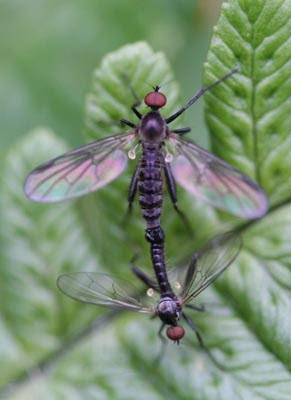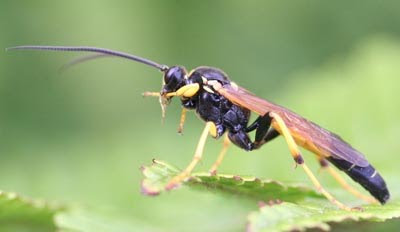The flowers of our more common rushes are probably ignored by 99.9% of the people who pass them, but they're certainly worth more than a passing glance. These are the flowers of Jointed Rush - Juncus articulatus:

The larvae of Sawflies are all vegetarians; most of them eating leaves, either externally or internally as leaf miners, although a few are stem-borers or bark-borers. Fewer still are the fern-dwellers, and this looks to be one of them. As I mentioned before, Sawflies are under-documented, but this one looks to be close to Stromboceros delicatulus, which is known to be a stem-borer on Bracken. Bracken was very nearby, but I found this specimen sitting on Broad Buckler fern:
 On 31st May I showed the very common Snipe-fly Rhagio scolopacea. This is the much smaller, but closely related, Rhagio lineola:
On 31st May I showed the very common Snipe-fly Rhagio scolopacea. This is the much smaller, but closely related, Rhagio lineola: The last two species are both new to me.
The last two species are both new to me.
















































